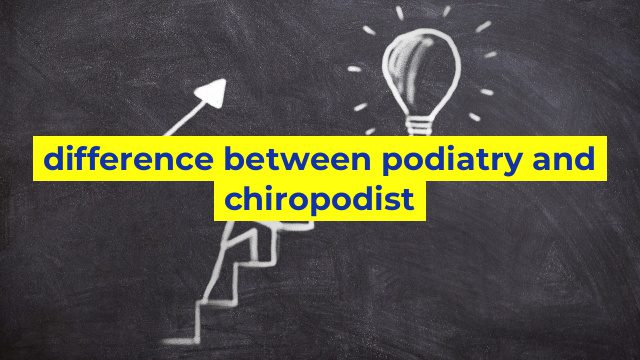The Difference Between Podiatry and Chiropodist
If you’re struggling with foot issues, you may have heard of the terms podiatry and chiropodist. While these two terms are often used interchangeably, there are some key differences between the two.
What is Podiatry?
Podiatry is a medical specialty that focuses on the diagnosis and treatment of conditions associated with the feet, ankles and lower limbs. Podiatrists are healthcare professionals who have specialized training to help manage conditions such as fungal nail infections, warts, calluses, and diabetic foot problems. Podiatrists can also perform surgical procedures for more advanced conditions such as bunions, and they can provide orthotics to improve foot and ankle alignment.
What is a Chiropodist?
A chiropodist is a healthcare professional that specializes in the diagnosis and treatment of conditions related to the feet, but it is a term that is mainly used in the United Kingdom. In the United States, the term “chiropodist” has been replaced by “podiatrist.” In the past, chiropodists were trained to provide basic foot care such as trimming nails and treating corns and calluses. However, today, chiropodists are required to have a four-year degree in podiatric medicine.
What are the Differences?
In terms of education and training, podiatrists and chiropodists have different requirements. In countries like the United States, podiatrists complete four years of specialized medical education and training to become licensed. Chiropodists, however, can have varying levels of education and training, depending on the country they practice in.
In terms of scope of practice, podiatrists have a broader range of skills and are able to perform surgical procedures that chiropodists cannot. Podiatrists are also trained to diagnose and manage issues related to the lower limbs, such as sports injuries and high-arched or flat feet.
Regardless of the terminology, both podiatrists and chiropodists are respected healthcare professionals that can help you manage your foot health. If you’re experiencing foot problems, seek out a licensed and trained specialist who can provide you with the appropriate care and treatment.
Table difference between podiatry and chiropodist
| Podiatry | Chiropodist |
|---|---|
| Focuses on the diagnosis and treatment of conditions affecting the feet, ankles, and lower legs. | Focuses on the diagnosis and treatment of conditions affecting the feet and lower limbs. |
| Requires a degree in podiatry, which involves a 3-4 year course of study. | Requires a diploma or certificate in chiropody or podiatry, which involves a shorter period of study compared to podiatry. |
| Podiatrists can perform surgery, prescribe medication, and order diagnostic tests. | Chiropodists typically focus on non-invasive treatments such as trimming of nails, calluses, and corns. |
| Podiatry is recognized as a medical specialty, and podiatrists are licensed to practice medicine in many countries. | Chiropody is not recognized as a medical specialty in many countries, and practitioners may be limited in terms of what treatments they can provide. |
| Podiatrists are trained to treat a wide range of conditions, including sports injuries, nail disorders, and diabetic foot care. | Chiropodists focus primarily on the treatment of foot disorders and may refer patients to other specialists if necessary. |

